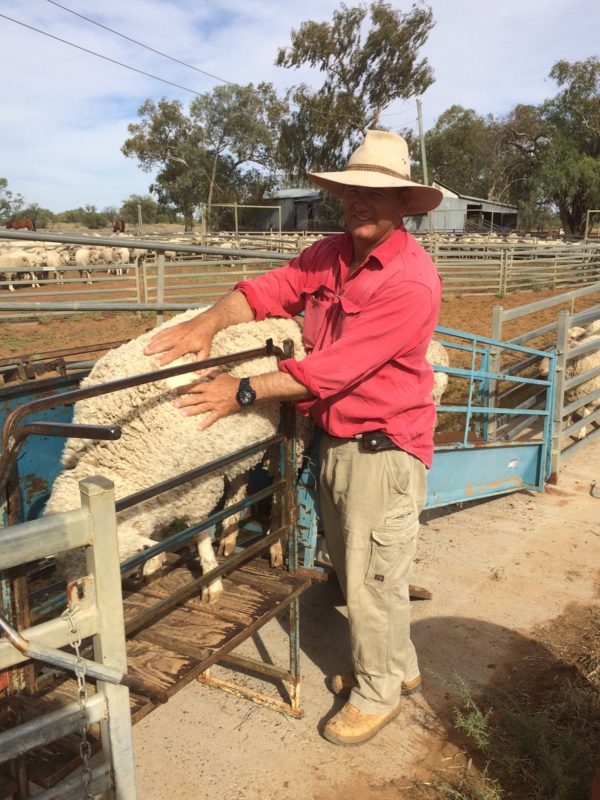Surviving in Tough Conditions
DAVID & JULIE HAWKER
CUNNAMULLA, QUEENSLAND
AFTER destocking his Merinos due to bad drought conditions in 2006, David Hawker saw an opportunity to run another breed which could be well suited to his Queensland property.
Mr Hawker, whose Cunnamulla property “Westlea” covers about 12,140 hectares, has now switched to a Dohne flock, and he believes the transition has come with many benefits. These extend across a wide range of areas: management, size, market reception, wool quality and the breed’s appropriateness to the district.
He said the decision to change was also partly due to his classer. “The classer for our Merinos also happened to be a Dohne classer,” Mr Hawker said. “We decided to experiment with the Dohnes.”
Mr Hawker said aside from their neighbour, who operates a Dohne stud, there weren’t too many other Dohne producers in the area. Instead, he said there were many who had gone for Dorpers or SAMMs. After the property had been destocked of Merinos, Mr Hawker set about introducing an initial Dohne flock, and purchasing Dohne rams.
“When we had Merinos, we were quite happy just to get flock rams, but now with the Dohnes we are sourcing our rams from on property sales,” he said.
Mr Hawker said they aim to get between five and 10 rams a year. As for overall numbers, they have roughly between 2500 and 3000 ewes. There have been many noticeable benefits since the switch, chiefly the breed’s suitability to the property itself.
“They are a little bit hardier, and they suited our climate and property which is semi-arid. One of the other benefits we discovered is that they wouldn’t need mulesing, ” he said.
When the Dohnes were first introduced to the property, there were two joinings a year for both autumn and spring lambings. Today, however, the Dohnes just have a spring lambing. Mr Hawker said he was also impressed by the quality of the wool itself, and it seemed to have improved over time.
Fibre diameter usually measures 20-micron, down slightly from the Merinos which were measuring 21- to 21.5-micron. Many of Mr Hawker’s Dohnes had recently been sold to feedlots.

David Hawker classing one of his Dohnes.
Bringing Impressive Benefits
DOHNES have worked wonders on David and Julie Hawker’s Cunnamulla property “Westlea”, with Mr Hawker believing they have brought benefits in terms of wool, size and performance.
Mr Hawker said the Dohnes were partly introduced as a result of the drought, and partly on the advice of his classer, and believes they are well suited to the semi-arid conditions of the property.
Mr Hawker said he had been impressed by many of the qualities the Dohnes had presented.
“Size has been good all the way through,” he said. “And wool quality has also been impressive.” He said this was despite the fact it had been quite a dry year this year.
Given the dry conditions, the lead of the flock had been sold direct to the feedlots while the tail end had been kept on the property.
With average annual rainfall between 13.5 and 14.5 inches, he said the fact the Dohnes were a hardy breed and tended to forage well on shrubs and trees in addition to grass meant they were
somewhat more suited to the property than Merinos.
As for wool, Mr Hawker said while some of the wool yields have dropped in some years, the quality had been very good.
“The quality has been getting better as we’ve been moving through the flock.”










 Facebook
Facebook YouTube
YouTube Instagram
Instagram